AMD AM1 Kabini Part 2: Athlon 5350/5150 and Sempron 3850/2650 Tested
by Ian Cutress on May 29, 2014 2:00 PM ESTReal World Benchmarks
Video Conversion - x264 HD 3.03 Benchmark
Graysky's x264 HD test uses x264 to encode a 4Mbps 720p MPEG-2 source. The focus here is on quality rather than speed, thus the benchmark uses a 2-pass encode and reports the average frame rate in each pass.
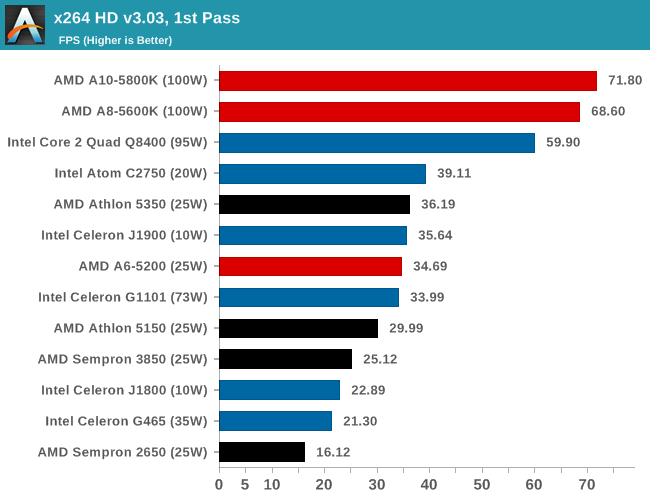
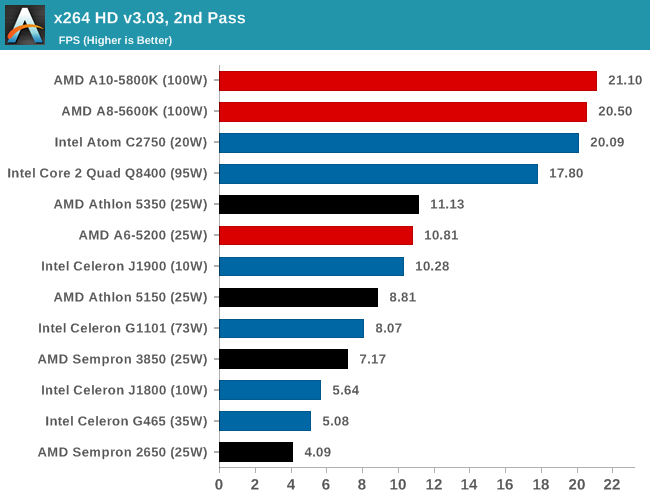
Encryption –TrueCrypt v0.7.1a: link
TrueCrypt is an off the shelf open source encryption tool for files and folders. For our test we run the benchmark mode using a 1GB buffer and take the mean result from AES encryption.
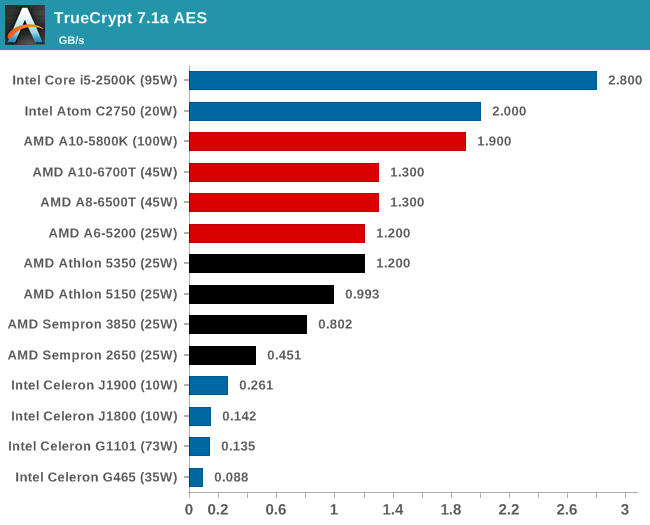
Compression – WinRAR 5.0.1: link
Our WinRAR test from 2013 is updated to the latest version of WinRAR at the start of 2014. We compress a set of 2867 files across 320 folders totaling 1.52 GB in size – 95% of these files are small typical website files, and the rest (90% of the size) are small 30 second 720p videos.
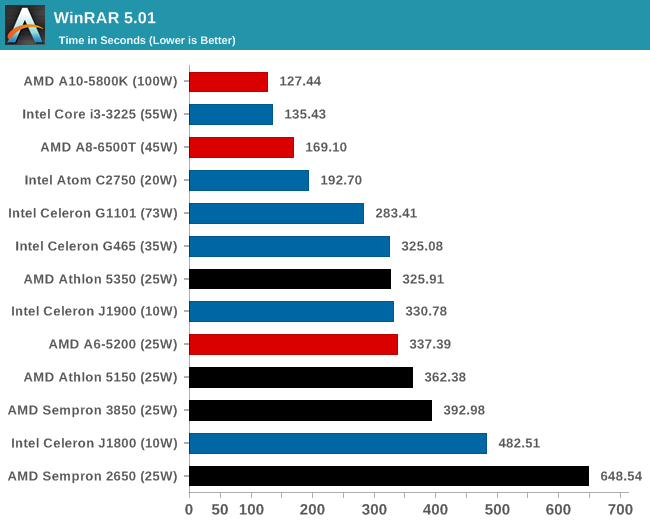
Image Manipulation – FastStone Image Viewer 4.9: link
Similarly to WinRAR, the FastStone test us updated for 2014 to the latest version. FastStone is the program I use to perform quick or bulk actions on images, such as resizing, adjusting for color and cropping. In our test we take a series of 170 images in various sizes and formats and convert them all into 640x480 .gif files, maintaining the aspect ratio. FastStone does not use multithreading for this test, and thus single threaded performance is often the winner.
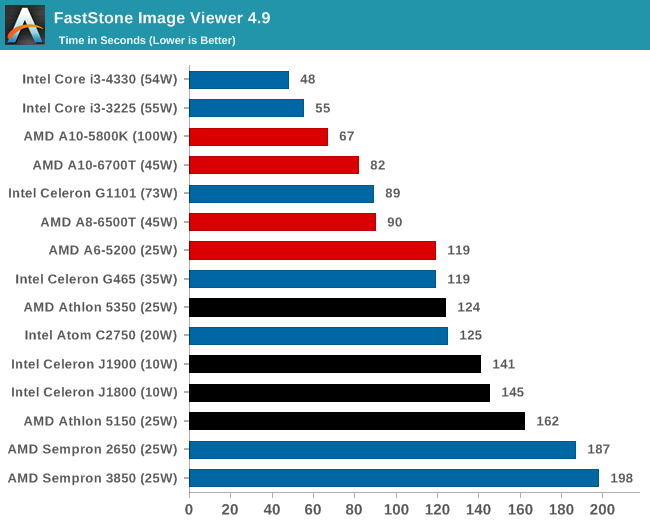










87 Comments
View All Comments
serpretetsky - Thursday, May 29, 2014 - link
I'm not sure I understand the power chart on page 2. Is the title correct? Power difference? So the numbers we are seeing are power differentials between idle and load and not absolute values?casteve - Friday, May 30, 2014 - link
Ian uses a 1250W PSU in this setup. So, absolute value is pretty meaningless when your system idles down in the low efficiency (and high slope) part of the power supply's curve. The delta power part at least provides an idea of what's going on.jospoortvliet - Sunday, June 1, 2014 - link
Yet idle power is quite important - cpu's are idle most of the time...coburn_c - Thursday, May 29, 2014 - link
There's your future of AMD. Scaling up Jaguar will fix their code/module problems and improve their perf/watt. There is certainly no future in their big cores.rootheday3 - Thursday, May 29, 2014 - link
Ivy Bridge gt1 was 6 eus; bay trail is 4 eus.jvp - Friday, May 30, 2014 - link
What is missing in this review is that some Intel processors have stripped down instruction sets. Like the Celeron J1900 with which the Athlon 5350 is compared as direct competitor.I'm also missing tests about performance when using virtual machines, and hardware accelerated encryption. These are area's that are becoming more and more important for systems.
R3MF - Friday, May 30, 2014 - link
this is lovely, thanks, but how long before we get beema in socket AM1?R3MF - Friday, May 30, 2014 - link
in addition, do i understand correctly that:kabini is 28nm TSMC, whereas
beema is 28nm GF
plonk420 - Friday, May 30, 2014 - link
thank you thank you THANK YOU for including i3-4300 series on the dGPU page! i've been wondering how they stand up to gaming on a budget as i've helped do 2 builds in the last couple months for the first time in years!Icehawk - Friday, May 30, 2014 - link
I'm with prior posters - testing these low end machines with current games is all well and good but also unlikely to happen in real life. Can these handle games I'd be more likely to want to play on a low power device like TF2 or Diablo 3? NO CLUE.